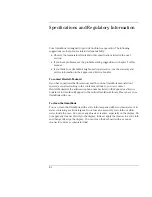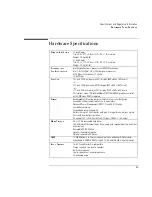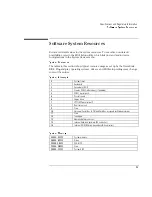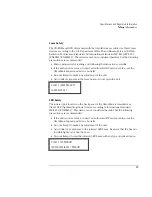
Troubleshooting
Solving Problems
7-13
Printing Problems
Hint
For most printing problems, use the Print Troubleshooter in Windows Help.
If a serial or parallel printer doesn’t print
•
Check that you are using a proper cable or cable adapter, and that the printer is
on.
•
Check for paper in the printer or other printer errors.
•
Make sure the printer cable is secure at both ends.
If an infrared printer doesn’t print
•
Windows NT 4.0 does not support infrared devices.
•
From Control Panel, Infrared, check that your infrared printer is detected.
•
Make sure the infrared light path is not blocked.
•
Check for paper in the printer or other printer errors.
•
Make sure Windows is running—infrared printing is supported only while
Windows is running.
•
An infrared driver must be installed and the BIOS Setup setting must be enabled.
For details, refer to the Readme file in \Omnibook\Drivers.
•
In Windows Help, use the Print Troubleshooter.
If the left edge of printed output is missing
•
If the printer you are using is a 600-dpi (dots per inch) printer, try selecting a
compatible printer driver for a 300-dpi printer. For example, for a 600-dpi
HP LaserJet printer, try using the HP LaserJet IIIsi driver (300-dpi). Certain
applications may not work properly with 600-dpi printers.
Summary of Contents for OmniBook 2100
Page 1: ...HP OmniBook 2100 Reference Guide ...
Page 9: ...1 Introducing the OmniBook ...
Page 25: ...2 Operating the OmniBook ...
Page 46: ......
Page 47: ...3 Managing Battery Power ...
Page 58: ......
Page 59: ...4 Making Connections ...
Page 79: ...5 Expanding the OmniBook ...
Page 87: ...6 Using the Recovery CD ...
Page 93: ...7 Troubleshooting ...
Page 110: ......
Page 111: ...8 Specifications and Regulatory Information ...
















































